 |
|
|
|
 |
|
 |
 |
 |
|
 |
 |
|
 |
|
|
|
 |
|
|
*Click on any picture to see full size. |
|
|
A 1935 Model (M35) 'French' Uniform to a Senior Lieutenant |
|
|
|
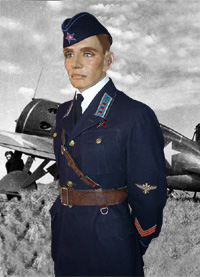 |
|
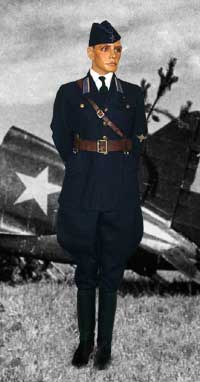 |
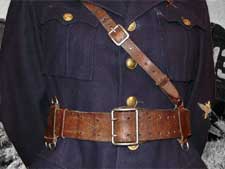 |
|
| The uniforms of this period - 1935-1940- almost always featured a garrison belt from which a holster and/or dagger could be worn depending on occasion. The Soviet pilots of this period wore their winged flight qualication on the left sleeve as a bullion patch. See below for a close-up. |
|
|
| In 1935, the Red Air Force (VVS) introduced a new uniform based on the designs of a British officer named French, which featured an open lapel collar and tie. This was a major change in style and meant to reflect the modern and western advances of Russia's air fleet. The uniform was overall blue like the French air forces. This was worn inot the early part of the war. |
|
|
|
The M35 insignia system featured rank on the collar with enamel marks and with sleeve chevrons, |
|
|
|
|
|
|
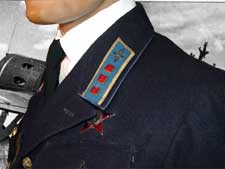 |
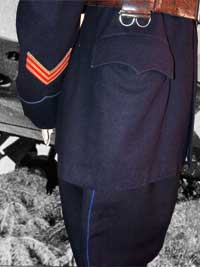 |
|
 |
|
|
| A close-up of the M35 collar shows the western style of the open lapel collar. This was unique for the Soviet forces and dissapeared as of 1940. It would not reappear until the introduction of a new uniform in 1949. The rank badges at the time were simple. The square enamel was for Lieutenant - three squares denoted senior lieutenant. The blue and winged pro denoted air services. The gold trim denoted active flight personnel (versus political officers). Engineers would wear the same uniform but with winged hammer devices. |
|
|
| The M35 uniform could be worn with matching blue pants or breeches. In this case, breeches are worn. The pants feature the same blue pinstripe for officers. Officers of brigade rank an higher wore the same pants. Not until the re-introduction of General rank in 1940 were special double stripe pants worn for Generals. The double rings on the belt were for wearing a suspended holster. |
|
|
| Aleksandr Dmitriyevich Aniskin, Hero of the Soviet Union as of February 22, 1943. He is pictured here in his M35 uniform. The badge on his chest is for parachute qualification. He was a leading pilot in the battle of Stalingrad flying a Yak. |
|
|
|
|
|
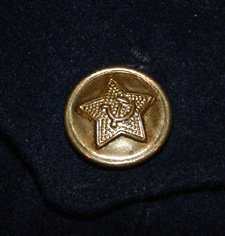 |
|
|
|
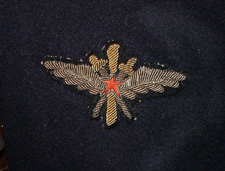 |
|
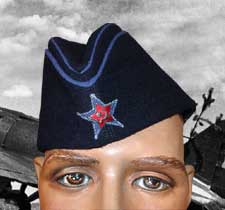 |
|
|
| The Soviet pilot wing. This style of wing was worn by all active combat pilots - both in the navy and army. Mechanics later wore a similar wing that had a crossed hammers instead of swords. Airship pilots had a fouled anchor in the middle instead of a propeller and swords. |
|
|
| The M35 was worn with either a blue wool officer's visor cap (see above picture), or with the pilotka side cap, also in blue wool. As olive drab field gear was introduced closer to the war, personnel tended to wear a mix of both colors. |
|
|
| A close-up of the standard officer's button of the period. Gilt brass in color. This early style star features a pebbled relief around the sickle and hammer. |
|
|
|
|
|
|
|
|
|
|
All images ©Tod Rathbone |
|
|
|

|
|
|
|
|
|
|
|
|
|
|
|
|
|
|
|
|
|
|
|
|
|
|
|
|
|
|
|
|
|

















